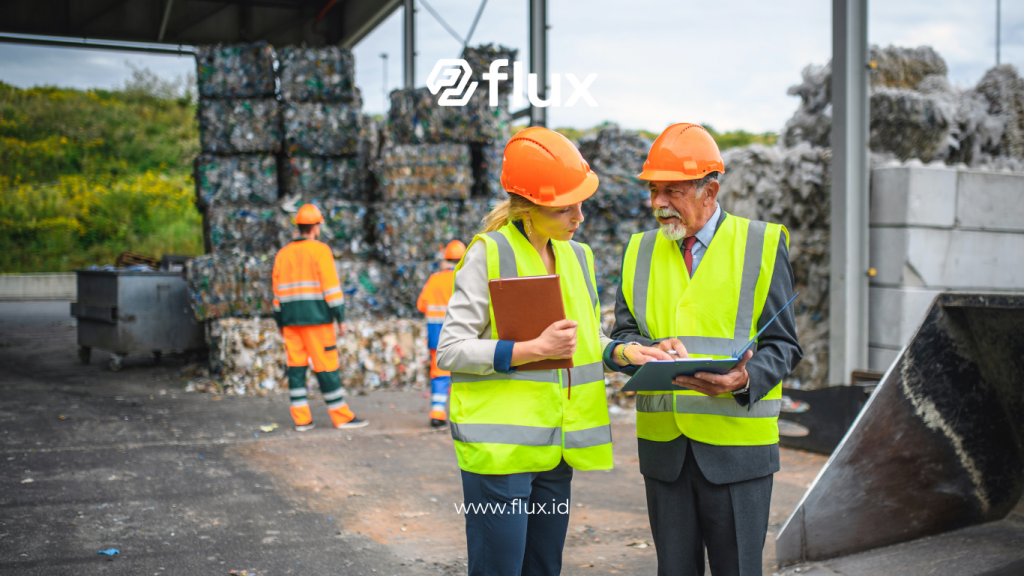Don't miss our holiday offer - 20% OFF!
Managing waste is a significant challenge for cities worldwide. The continuous increase in waste production, if not handled efficiently, can cause severe environmental problems. To address this issue, waste sensor technology, part of the Internet of Things (IoT) ecosystem, offers a smart solution. By optimizing waste management, preventing waste pile-ups, and maintaining cleanliness, this technology supports a healthier environment. Let’s explore waste sensor technology in-depth, including how it works and its advantages in modern waste management.
Contents
What is a Waste Sensor?

Read More: Sensor Technology in Waste Management: Enhancing Efficiency and Environmental Cleanliness
A waste sensor is an IoT-enabled device installed in waste bins or waste management facilities. Its main function is to monitor waste levels, detect waste types, and send real-time data to a management system. With this information, waste managers can schedule collections effectively, helping to prevent bin overflow.
How Do Waste Sensors Work?
Waste sensor technology combines hardware and software for efficient waste monitoring. Here are some key components used in this technology:
- Ultrasonic Sensors: Positioned inside or above waste bins, these sensors measure waste volume by emitting sound waves. The sensor calculates the volume based on the distance between itself and the waste surface.
- Moisture and Temperature Sensors: Along with volume, some sensors monitor moisture and temperature levels in the bins. This helps detect decaying organic material or hazardous waste.
- Network Connectivity: Waste sensors connect to IoT networks, such as Wi-Fi, LPWAN, or 4G/5G. This connectivity allows real-time data transmission to the central waste management system.
- Real-Time Data Analysis: The system processes and analyzes the data, providing managers with insights to optimize collection schedules, maximize bin capacity, and plan efficient routes.
Advantages of Waste Sensors in Waste Management

Read More: IoT in Agriculture – Reducing Waste and Boosting Productivity
Implementing waste sensors offers multiple benefits for waste management providers and the public. Here are some key advantages:
- Preventing Waste Overflow: Waste sensors alert managers when bins are nearly full. With timely collection scheduling, managers can prevent overflow, unpleasant odors, and environmental contamination.
- Cost-Efficiency in Collection: By monitoring waste volume, managers can reduce unnecessary trips and optimize collection routes. This reduces fuel consumption, labor costs, and vehicle maintenance expenses.
- Maintaining a Cleaner Environment: Proper waste management helps reduce pollution, keeps cities cleaner, and supports public health, making waste sensors valuable tools for sustainability.
- Increasing Public Awareness: In some areas, cities install waste sensors in public places to educate residents. Witnessing efficient waste management, people become more encouraged to dispose of waste responsibly.
- Monitoring Waste Types: Sensors can identify waste types, including organic, inorganic, or hazardous waste. This information supports recycling efforts and enhances overall waste management efficiency.
Adoption of Waste Sensors in Global Cities
Several major cities have integrated waste sensor technology as part of their smart city initiatives. Here are some examples:
- Barcelona, Spain: Since 2015, Barcelona has used waste sensors to improve waste collection. With sensors installed in thousands of bins, the city has reduced collection frequency by up to 25%, significantly cutting operational costs.
- New York, United States: New York uses waste sensors in high-density areas, such as public parks and tourist sites, to reduce collection costs.
- Seoul, South Korea: Seoul has implemented waste sensors in crowded apartment complexes and residential areas. The data helps the city improve recycling programs by tracking dominant waste types in specific regions.
Challenges in Waste Sensor Implementation

Read More: Waste Sensors for Smart Cities: Technological Innovations in Urban Environmental Management
Despite its many benefits, using waste sensors comes with challenges. Here are some of the most common obstacles:
- High Installation Costs: Installing and maintaining sensors can be costly, especially over large areas. This limits its implementation in cities with tighter budgets.
- IoT Network Limitations: Waste sensors depend on stable network connectivity. In areas with limited internet access, achieving reliable functionality may be difficult.
- Sensor Reliability: Sensors exposed to extreme weather conditions or unsanitary environments may wear out faster. Regular maintenance is essential to ensure accurate data collection.
- Data Privacy and Security: Since waste sensors collect large volumes of data, waste management providers need to ensure data protection against misuse.
The Future of Waste Sensor Technology

Read More: How Smart Trash Sensors Work in a Smart City: Optimizing Waste Management with IoT Technology
In the future, waste sensor technology is likely to become even more advanced and affordable. Here are some emerging trends:
- AI and Machine Learning Integration: With AI and machine learning, waste sensors can offer more accurate analysis of waste types and better management recommendations.
- Eco-Friendly Energy Sources: Future waste sensors may incorporate renewable energy sources, such as solar power, for more sustainable and efficient operation.
- Integration with Mobile Applications: Waste management services may use mobile apps connected to sensors, allowing the public to report full bins or check collection schedules.
- Incentive Programs for the Public: Data from waste sensors could support incentive programs, encouraging people to recycle and dispose of waste properly in return for rewards.
Conclusion
Waste sensors represent an innovation that can help reduce pollution and improve waste management efficiency. By providing real-time data, waste managers can streamline collection schedules and prevent waste pile-up. Although there are challenges like high costs and reliability issues, the benefits of this technology are significant in creating a cleaner, more sustainable environment. Waste sensors are a valuable step toward better urban waste management and environmental health. As this technology advances, it promises an even greater impact on urban cleanliness and sustainability.





